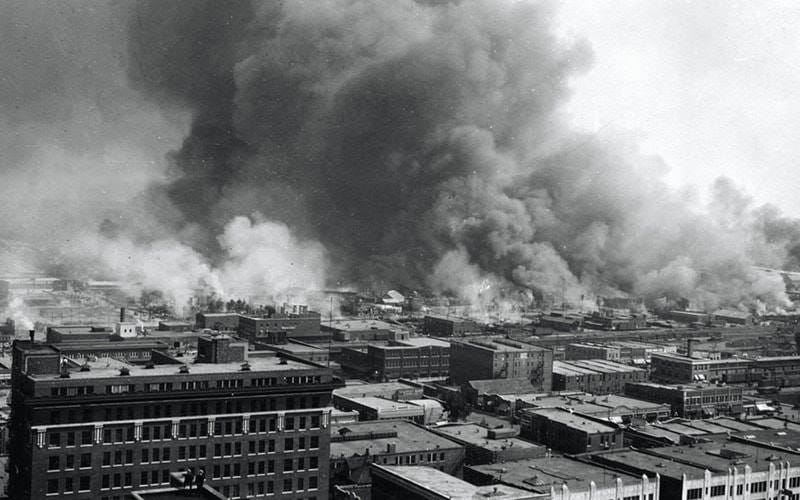Remembering The Tulsa Race Riots

Originally Published on Medium
The Tulsa race riot was a large-scale, racially motivated conflict on May 31 and June 1, 1921, in which thousands of white people attacked the black community of Tulsa, Oklahoma. It resulted in the Greenwood District, also known as Black Wall Street and the wealthiest black community in the United States, being burned to the ground.
During the 16 hours of the assault, more than 800 people were admitted to local white hospitals with injuries (the two black hospitals were burned down), and police arrested and detained more than 6,000 Black Greenwood residents at three local facilities. An estimated 10,000 Black folks were left homeless, and 35 city blocks composed of 1,256 residences were destroyed by fire. The official count of the dead by the Oklahoma Department of Vital Statistics was 39, but other estimates of black fatalities varied from 55 to about 300.
The events of the riot were long omitted from local and state histories. Numerous witness accounts described airplanes carrying white assailants, who fired rifles and dropped firebombs on buildings, homes, and fleeing families. As unrest spread to other parts of the city, many middle-class white families who employed blacks in their homes as live-in cooks and servants were accosted by white rioters. They demanded that families turn over their employees to be taken to detention centers around the city. Many white families complied, and those who refused were subjected to attacks and vandalism in turn.
Property damage amounted to more than $1.5 million in real estate and $750,000 in personal property ($32 million in 2019).

The powerful black community that was created was intentional. “In 1906, O.W. Gurley, a wealthy African-American from Arkansas, moved to Tulsa and purchased over 40 acres of land that he made sure was only sold to other African-Americans,” writes Christina Montford in the Atlanta Black Star. He provided an opportunity for those migrating “from the harsh oppression of Mississippi.” The average income of black families in the area exceeded “what minimum wage is today.” As a result of segregation, a “dollar circulated 36 to 100 times” and remained in Greenwood “almost a year before leaving.” Even more impressive, at that time, the “state of Oklahoma had only two airports,” yet “six black families owned their own planes.”
Much like today, African-Americans’ economic status would not save them from the racial hostility of their day. Greenwood survivors recount disturbing details about what happened that night. Eyewitnesses claim “the area was bombed with kerosene and/or nitroglycerin,” causing the inferno to rage more aggressively. Official accounts also stated that private planes “were on reconnaissance missions, they were surveying the area to see what happened."
In honor of Black History Month, it’s important to learn and understand that which was not taught in our school’s History classes. As children in the United States, we have been fed a narrative that is?—?for lack of a better term?—?white-washed version of history that is both inaccurate and obscured in our curriculum. In order for us to learn and understand our actual history, the onus is on us as individuals to search for the truth of our nation’s foundation no matter how ugly it may be. It is only then that we can advance as a society by ensuring we never revisit the horrors of our past.
(Images Courtesy of The Library of Congress)
|
THE NEW STREAMLINED RSN LOGIN PROCESS: Register once, then login and you are ready to comment. All you need is a Username and a Password of your choosing and you are free to comment whenever you like! Welcome to the Reader Supported News community. |
ARTICLE VIEWS: 1606
MOST RECENT ARTICLES
|
Monday, 30 August 2021 |
|
Sunday, 29 August 2021 |
|
Sunday, 29 August 2021 |
|
Sunday, 29 August 2021 |
|
Saturday, 28 August 2021 |
|
Thursday, 26 August 2021 |
|
Thursday, 26 August 2021 |













